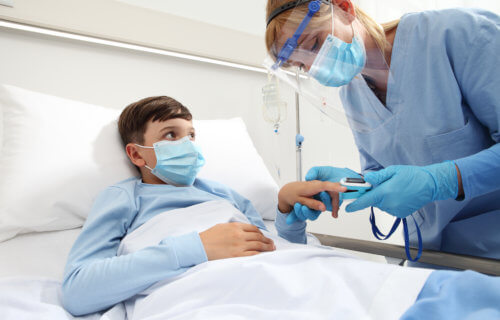
PITTSBURGH — Concerning new data shows that nearly half of all children hospitalized with COVID-19 experience neurological symptoms. Researchers from the University of Pittsburgh also report COVID-positive pediatric patients with these symptoms were much more likely to need intensive care.
Of the 44 percent of children with neurological symptoms, the most common were headaches and acute encephalopathy, or in simpler terms, “an altered mental status,” doctors say.
“The SARS-CoV-2 virus can affect pediatric patients in different ways: It can cause acute disease, where symptomatic illness comes on soon after infection, or children may develop an inflammatory condition called MIS-C weeks after clearing the virus,” says lead study author Dr. Ericka Fink, pediatric intensivist at UPMC Children’s Hospital of Pittsburgh, and associate professor of critical care medicine and pediatrics at Pitt, in a university release. “One of the consortium’s big questions was whether neurological manifestations are similar or different in pediatric patients, depending on which of these two conditions they have.”
MIS-C a serious side-effect of COVID in children
In all, 30 pediatric critical care centers located all over the world treating 1,493 children participated in this study. Among that entire patient base, doctors diagnosed 86 percent (1,278) with acute SARS-CoV-2. Meanwhile, another 14 percent (215) had multisystem inflammatory syndrome in children (MIS-C). Characterized by organ dysfunction, a fever, and inflammation, MIS-C usually develops weeks after recovering from COVID-19.
Besides an altered mental state and headaches, seizures were the third most common neurological symptom among children with acute SARS-CoV-2. Regarding MIS-C, the most common neurological symptoms were headache, acute encephalopathy, and dizziness. While much more rare, other reported symptoms across both groups include stroke, loss of smell, psychosis, and vision issues.
“Thankfully, mortality rates in children are low for both acute SARS-CoV-2 and MIS-C,” Dr. Fink explains. “But this study shows that the frequency of neurological manifestations is high—and it may actually be higher than what we found because these symptoms are not always documented in the medical record or assessable. For example, we can’t know if a baby is having a headache.”
It’s important to note that neurological symptoms were actually more frequent among pediatric MIS-C patients than those dealing with acute COVID-19. Similarly, kids with MIS-C were also more likely to develop at least two neurological symptoms. Study authors have already started work on a follow-up study aimed at assessing the long-term impact of both MIS-C and COVID-19 on recovered children.
“Another long-term goal of this study is to build a database that tracks neurological manifestations over time—not just for SARS-CoV-2, but for other types of infections as well,” Dr. Fink concludes. “Some countries have excellent databases that allow them to easily track and compare children who are hospitalized, but we don’t have such a resource in the U.S.”
The findings appear in the journal Pediatric Neurology.
